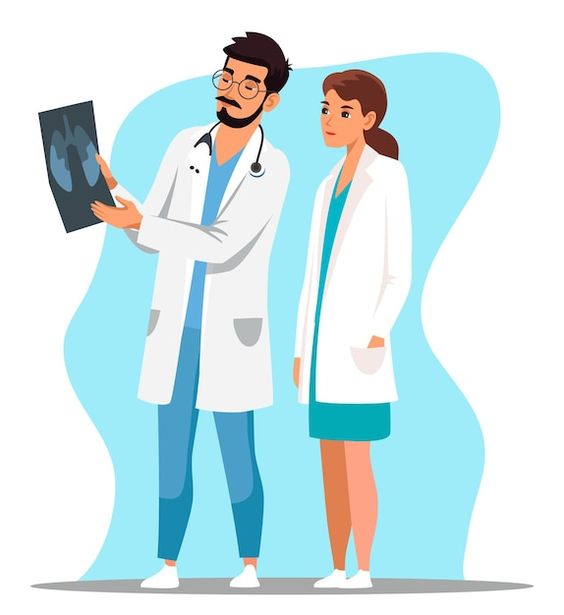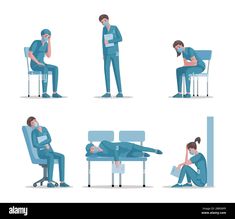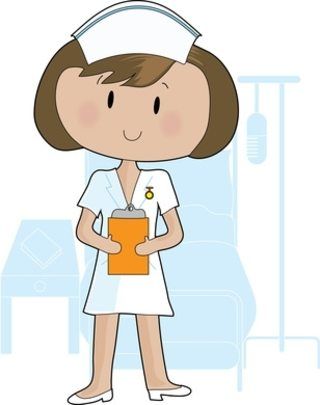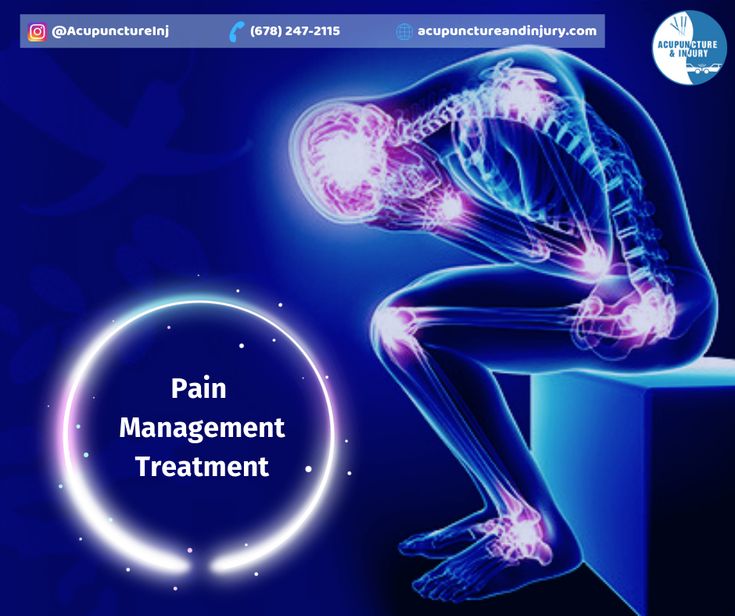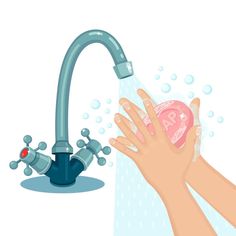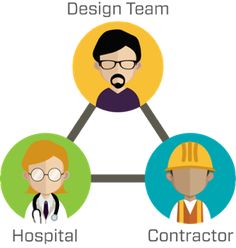
Table of Contents
Pediatric Nursing and the Journey Through Developmental Stages in children.
Pediatric nursing is a distinct and captivating domain within the broader healthcare landscape. Here, nurses embark on a remarkable journey, caring for children at various stages of development – from the fragile innocence of infancy to the burgeoning independence of adolescence. Though brimming with wonder, this world presents unique challenges and rewards for nurses who navigate the intricate tapestry of developmental stages in children.
Understanding these stages isn’t merely an academic exercise; it’s the cornerstone of effective pediatric nursing practice. A child’s developmental stage influences everything from communication abilities to understanding illness and emotional responses to medical interventions. By appreciating these nuances, nurses can tailor their approach, ensuring clear communication, accurate assessments, and age-appropriate and well-received interventions.
The path of a pediatric nurse is a constant dance between challenge and reward. Deciphering a newborn’s whimper or navigating a teenager’s emotional turmoil is a glimpse of nurses’ obstacles. Yet, the rewards are equally profound. Witnessing a child overcome a health hurdle, fostering trust with a scared toddler, or guiding a teenager towards healthy choices. These moments illuminate the immense impact pediatric nurses have on young lives.
Understanding the Developmental Journey

Importance of Developmental Stages:
For pediatric nurses, the developmental stages of children are the roadmap to understanding their young patients. By appreciating the physical, cognitive, emotional, and social milestones associated with each stage, nurses can:
- Communicate Effectively: Tailor their communication style to match the child’s understanding. Simple explanations and visual aids for younger children and open-ended questions for older children all contribute to clear communication and accurate information gathering.
- Conduct Comprehensive Assessments: Utilize age-appropriate assessment tools that consider the expected developmental milestones. This ensures nurses know potential delays and misinterpreting behaviors based on an outdated understanding of the child’s capabilities.
- Plan Effective Interventions: Choose developmentally appropriate interventions that are likely to be well-received by the child. Forcing a toddler to lie still for a lengthy examination might be counterproductive while encouraging a teenager to participate in their care plan fosters a sense of autonomy.
Key Developmental Stages:
Children progress through distinct developmental stages, each marked by significant leaps in various domains:
- Infancy (Birth to 1 year): Newborns rely on nonverbal cues like crying and facial expressions to communicate needs. Physical growth is rapid, and cognitive development is marked by increasing curiosity and exploration of the world through their senses. Emotionally, infants form strong attachments to caregivers and experience separation anxiety. Socially, they interact with others through smiles, laughter, and basic gestures.
- Toddlerhood (1 to 3 years): This stage is characterized by a surge in physical mobility and independence. Cognitive development is evident in language acquisition, the development of memory, and pretend play. Emotionally, toddlers experience rapid mood swings and frustration when faced with limitations. Socially, they begin to assert themselves, engage in parallel play, and develop a sense of self.
- Preschool (3 to 5 years): Preschoolers exhibit remarkable cognitive growth through language development, increased attention span, and an eagerness to learn. Their emotional regulation improves, although they might still experience tantrums. Socially, they engage in cooperative play, develop friendships, and learn the importance of sharing and taking turns.
- School-Age (6 to 12 years): Physical growth slows, and cognitive development focuses on concrete thinking, logic, and mastering academic skills. Emotionally, school-age children become more self-conscious and susceptible to peer pressure. Socially, friendships become more important, and they develop a sense of belonging within their peer group.
- Adolescence (12 to 18 years): This period is marked by dramatic physical changes associated with puberty. Cognitive development progresses towards abstract thinking and independent problem-solving. Emotionally, adolescents experience mood swings, increased self-awareness, and grapple with identity formation. Socially, they seek independence from parents, establish romantic relationships, and define their sense of self about their peers.
Developmental Variations:
It’s crucial to remember that development is not a linear race with a single finish line. Children develop at their own pace, and variations within each stage are normal. Some children may walk earlier or talk later than their peers. These variations don’t necessarily indicate a problem. However, a pediatric nurse’s awareness of these developmental stages in children allows them to identify potential delays that might require further evaluation and intervention.
Impact on Communication:
A child’s developmental stage significantly influences their communication abilities. Nurses need to adapt their communication strategies accordingly:
- Infants: Respond to nonverbal cues, use soothing tones, and sing songs to create a calm and reassuring environment.
- Toddlers: Use simple language with short sentences and incorporate gestures or pictures. Provide choices when possible and offer positive reinforcement for desired behavior.
- Preschoolers: Engage in storytelling, answer their questions patiently, and encourage them to express their feelings verbally.
- School-age children: Use direct and honest communication, provide explanations based on their understanding, and encourage them to ask questions.
- Adolescents: Treat them respectfully, listen actively to their concerns, and encourage open communication about sensitive topics.
By understanding the impact of developmental stages in children on communication, nurses can foster trust, gather accurate information, and build rapport with their young patients.
Challenges and Rewards Across the Developmental Spectrum of Pediatric Nursing

The journey through developmental stages in children presents pediatric nurses with a unique set of challenges and rewards at each stage. Understanding these nuances allows nurses to tailor their care, navigate potential hurdles, and ultimately, make a profound impact on their young patients’ lives.
1. Infancy (Birth to 1 year)
Challenges:
- Deciphering Nonverbal Cues: Newborns rely on crying, facial expressions, and body language to communicate needs. Interpreting these subtle cues accurately can be demanding, especially for new nurses.
- Addressing Rapid Physical Growth Needs: Infants experience rapid physical growth, requiring nurses to stay up-to-date on appropriate feeding techniques, weight management, and ensuring their nutritional needs are met.
- Managing Separation Anxiety: Infants form strong attachments to caregivers and can experience significant distress when separated. Nurses must be skilled in comforting techniques and collaborating with parents to minimize separation anxiety.
- Providing Emotional Support to Parents: Parents of newborns are often sleep-deprived and overwhelmed. Nurses are crucial in providing emotional support, addressing anxieties, and educating them on infant care practices.
Rewards:
- Witnessing Remarkable Developmental Milestones: Few things are more rewarding than seeing a newborn’s first smile, gurgle, or attempt to roll over. Nurses have a front-row seat to these incredible developmental leaps.
- Fostering Trust and Attachment: Providing compassionate care to infants helps build trust and attachment between the infant and the nurse and within the family unit. This sense of security lays the groundwork for healthy emotional development.
- Contributing to a Healthy Foundation for the Child’s Life: By ensuring infants receive proper nutrition, promoting healthy sleep habits, and identifying potential developmental delays early on, pediatric nurses contribute significantly to a child’s healthy foundation for life.
2. Toddlerhood (1 to 3 years)
Challenges:
- Navigating Tantrums: Toddlers are notorious for expressing frustration and disappointment through tantrums. Nurses must remain calm, identify the underlying cause, and implement strategies to help toddlers constructively manage their emotions.
- Managing Limited Communication Skills: While language development rapidly progresses during toddlerhood, communication can still be limited. Nurses must rely on nonverbal cues, simple language, and creative strategies to understand toddlers’ needs and concerns.
- Ensuring Safety During a Period of Exploration: Toddlers are naturally curious and have a boundless sense of exploration. Nurses must maintain a safe environment, anticipate potential hazards, and educate parents on childproofing measures.
- Promoting Healthy Development: This stage fosters healthy social, emotional, and cognitive development. Nurses can play a role by encouraging play, providing positive reinforcement, and identifying any potential developmental delays that might require intervention.
Rewards:
- Building Rapport with Curious and Energetic Toddlers: Toddlers’ natural curiosity and enthusiasm can be infectious. Building rapport with these energetic little individuals creates a fun and rewarding work environment for nurses.
- Fostering Independence and Self-Care Skills: Toddlers take pride in newfound independence. Nurses can support this by encouraging them to participate in self-care activities like dressing themself or feeding themself, fostering a sense of accomplishment and self-confidence.
- Witnessing the Joy of Discovery: The world is a magical place for toddlers. Nurses have the privilege of witnessing their sense of wonder and excitement as they explore their surroundings and learn new things.
- Challenges and Rewards Across the Developmental Spectrum (continued)
4. School-Age (6 to 12 years)
Challenges:
- Understanding the Impact of Peer Pressure: School-age children become increasingly influenced by their peers. Nurses need to be aware of the potential negative impact of peer pressure and help children develop healthy social skills to resist negative influences.
- Addressing Self-Esteem Issues: Academic challenges, social awkwardness, or physical differences can contribute to self-esteem issues in school-age children. Nurses can provide support by encouraging their strengths, fostering a sense of belonging, and promoting a positive body image.
- Providing Support During Academic Challenges: Some children may face learning difficulties or struggle academically. Nurses can collaborate with teachers and parents to identify potential issues and offer resources and support mechanisms to help children succeed in school.
- Navigating Potential Chronic Health Conditions: This stage might involve managing chronic health conditions for some children. Nurses play a crucial role in educating children about their condition, promoting self-care skills, and providing emotional support as they navigate the challenges of living with a chronic illness.
Rewards:
- Building Rapport with Children Who Are Increasingly Independent: School-age children become more independent and engage in more complex conversations. Nurses can build strong rapport by treating them respectfully, actively listening to their concerns, and fostering a sense of partnership in their healthcare.
- Fostering Self-Advocacy Skills: Empowering children to communicate their needs and concerns effectively is crucial for their well-being. Nurses can encourage self-advocacy by providing opportunities for children to participate in their healthcare decisions and ask questions about their treatment plans.
- Contributing to Their Overall Well-being: By addressing physical, emotional, and social needs, nurses contribute significantly to the overall well-being of school-age children. Helping them navigate this crucial developmental stage sets them up for success in the years to come.
5. Adolescence (12 to 18 years)
Challenges:
- Navigating the Complexities of Puberty: Puberty brings a surge of physical and hormonal changes that can be confusing and overwhelming for teenagers. Nurses need to be a source of reliable information on sexual development, body image changes, and healthy hygiene practices.
- Managing Mood Swings and Emotional Turmoil: Teenagers experience significant emotional fluctuations. Nurses need to create a safe space for them to express their feelings without judgment and provide coping mechanisms to manage stress and emotional turmoil.
- Providing Support with Body Image Issues: Adolescence is a time when teenagers are highly self-conscious about their appearance. Nurses can play a vital role in promoting a positive body image by encouraging healthy lifestyle choices and celebrating individual differences.
- Addressing Potential Risky Behaviors: Teenagers might experiment with risky behaviors like substance abuse, unsafe sex, or reckless driving. Nurses need to be open and honest in their communication, educate them about the potential consequences, and encourage responsible decision-making.
Rewards:
- Building Trust with Teenagers Seeking Autonomy: Teenagers crave independence but still need guidance and support. Nurses can build trust by respecting their autonomy while offering guidance and setting clear boundaries.
- Fostering Healthy Decision-Making Skills: Equipping teenagers with the knowledge and skills to make healthy choices is paramount. Nurses can create a safe space for open discussion, empowering teenagers to think critically and make informed decisions about their health and well-being.
- Witnessing the Development of Their Unique Identities: Adolescence is a period of significant personal growth. Nurses are privileged to witness teenagers explore their interests, develop their values, and discover their unique identities.
Strategies for Success in Pediatric Nursing
The ever-evolving landscape of developmental stages in children demands a multifaceted approach from pediatric nurses. To ensure success in navigating these stages and providing optimal care, several key strategies come into play:
1. Developmental Assessment Tools: Understanding a child’s developmental stage is fundamental for practical assessment. Pediatric nurses utilize age-appropriate tools to evaluate a child’s physical, cognitive, emotional, and social progress. When used with clinical observation and parental input, these tools provide a comprehensive picture of the child’s development. They can identify any potential delays that might require further intervention.
2. Communication Techniques Tailored to Developmental Stages: Effective communication is paramount in pediatric nursing. However, the approach needs to adapt to the developmental stages in children. For example:
- Infants and Toddlers: Utilize nonverbal cues like facial expressions and body language to understand their needs. Speak soothingly, use simple words, and incorporate gestures or pictures for better comprehension.
- Preschoolers: Engage in storytelling, answer their questions patiently, and encourage them to express their feelings verbally. Use visuals like charts or drawings to explain procedures.
- School-Age Children: Communicate directly and honestly, provide explanations based on their understanding, and encourage them to ask questions. Please treat them with respect and involve them in decision-making whenever possible.
- Adolescents: Create a safe space for open communication, actively listen to their concerns without judgment, and use age-appropriate language. Please encourage them to participate in discussions about their healthcare and treatment plans.
3. Family-Centered Care: Parents and caregivers are integral to a child’s healthcare journey. Pediatric nurses practicing family-centered care collaborate with families to understand their concerns, address their anxieties, and include them in the care plan. This collaborative approach fosters trust, empowers families to participate actively in their child’s care, and ultimately leads to better outcomes.
4. Advocacy for Children: Children, especially younger ones, may struggle to articulate their needs effectively. Pediatric nurses act as advocates for their young patients, ensuring their voices are heard and their needs are met. This may involve advocating for appropriate testing, communicating effectively with other healthcare professionals, and ensuring the child’s comfort and well-being throughout the care process. By championing their interests, pediatric nurses play a vital role in safeguarding the rights and well-being of their young patients.
Conclusion: A Calling to Nurture the Future
Understanding developmental stages in children is the cornerstone of successful pediatric nursing. By appreciating each stage’s physical, cognitive, emotional, and social milestones, nurses can tailor communication, assessments, and interventions to ensure optimal care for their young patients. This journey, though demanding, presents a unique set of rewards at every turn.
Challenges and Rewards: A Tapestry of Growth
Pediatric nurses navigate a spectrum of challenges. From deciphering a newborn’s whimper to navigating the complexities of teenage emotions, these obstacles demand a blend of clinical expertise, empathy, and resilience. Yet, the rewards are equally profound. Witnessing a child overcome illness, fostering trust with a scared toddler, or guiding a teenager towards healthy choices ; these moments illuminate the transformative impact pediatric nurses have on young lives.
Beyond Treatment: A Legacy of Well-being
Pediatric nurses contribute far more than just medical expertise. They are advocates, educators, and a source of comfort for children and their families. Their care lays the foundation for a child’s lifelong health and well-being, shaping their physical and emotional development.
For aspiring nurses passionate about nurturing the vulnerable, pediatric nursing offers a fulfilling and impactful career path. Here, you’ll be privileged to witness the magic of childhood development firsthand, guiding children toward health and well-being. Embrace the challenges, celebrate the rewards, and join the ranks of those who make a lasting difference in the lives of children and their families. Consider pediatric nursing be the one who helps them bloom.




